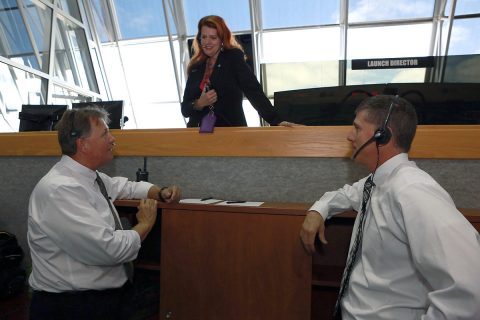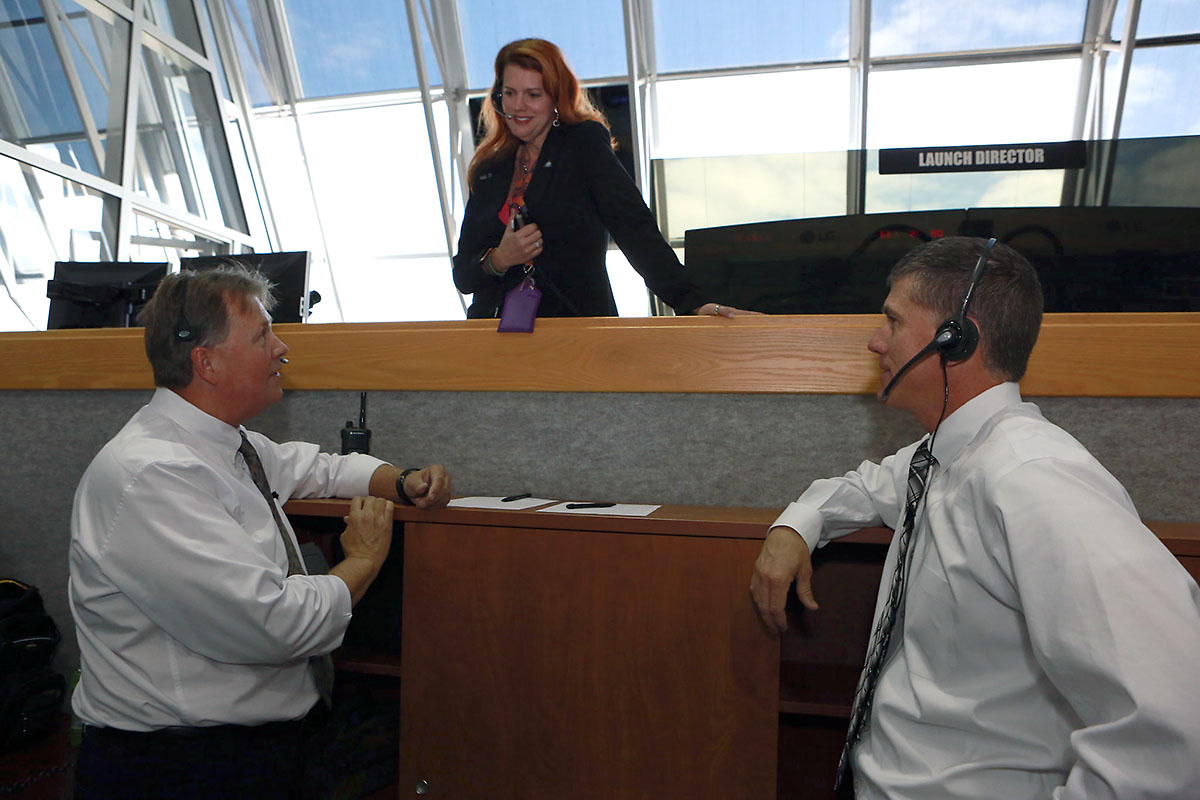 Florida – Before NASA’s mighty Space Launch System (SLS) rocket can blast off from the agency’s Kennedy Space Center to send the Orion spacecraft into lunar orbit, teams across the country conduct extensive testing on all parts of the system. Guiding that effort at the Florida spaceport are NASA test directors, or NTDs.
Florida – Before NASA’s mighty Space Launch System (SLS) rocket can blast off from the agency’s Kennedy Space Center to send the Orion spacecraft into lunar orbit, teams across the country conduct extensive testing on all parts of the system. Guiding that effort at the Florida spaceport are NASA test directors, or NTDs.
NTDs within the Exploration Ground Systems program are in charge of flight and ground hardware testing in Kennedy’s Launch Control Center firing rooms 1 and 2, where activities involved with preparing rockets, spacecraft and payloads for space can be controlled from computer terminals.

They are responsible for emergency management actions, helping lead the launch team during all facets of testing, launch and recovery.
NASA’s Artemis missions will land American astronauts on the Moon by 2024, beginning with Artemis I, the uncrewed flight test of SLS and Orion.
“It’s certainly an amazing feeling to be responsible for setting up the building blocks of a new program which will eventually take us to the Moon, Mars and beyond,” said Senior NASA Test Director Danny Zeno.
Zeno is leading the development of test plans and procedures that are essential to flight and ground hardware for the Artemis missions. This includes proving the functionality of flight and ground systems for the assembled launch vehicle configuration, verifying the mobile launcher arms and umbilicals operate as expected at launch, and performing a simulated launch countdown with the integrated vehicle in the Vehicle Assembly Building.
The 14-year NTD veteran relishes his hands-on role in successfully testing and launching SLS — the most powerful rocket NASA has ever built.
“It’s very fulfilling,” Zeno said. “What excites me about the future is that the work I’m doing today is contributing to someday having humans living and working on other planets.”
There are 18 people in the NTD office — all of whom must undergo rigorous certification training in the management and leadership of test operations, systems engineering and emergency response. They are in charge of the people, hardware and schedule during active firing room testing.
“The NTD office is at the center of testing operations, which will ensure that we are ready to fly the Artemis missions,” said Launch Director Charlie Blackwell-Thompson. “As we lay the foundation for exploring our solar system, the NASA test directors are on the front lines of making it happen.”
An NTD works from a console in the firing room during integrated or hazardous testing, guiding the team through any contingency or emergency operations. They lead critical testing on Launch Pad 39B and the mobile launcher, the 370-foot-tall, 11 million-pound steel structure that will launch the SLS rocket and Orion spacecraft on Artemis missions to the Moon and on to Mars. This includes sound suppression, fire suppression and cryogenic fluid flow tests, as well as testing the crew access arm and umbilicals — connections that will provide communications, coolant and fuel up until launch.
While the majority of work for the ground and flight systems is pre-liftoff, the job certainly doesn’t end there.
Spaulding has nearly three decades of experience in the Test, Launch and Recovery Office. For Artemis I, he is leading the launch control team and support teams during the launch countdown for Blackwell-Thompson, who will oversee the countdown and liftoff of SLS.
Just over three miles from the launch pad, on launch day, Spaulding will be in the firing room running the final portion of cryogenic loading through launch. During this time, supercool propellants — called cryogenics — are loaded into the vehicle’s tanks. He will perform the same tasks for the wet dress rehearsal, which is a full practice countdown about two months before launch that includes fueling the tanks and replicating everything done for launch prior to main engine start.
At the end of the mission, part of the team will lead the recovery efforts aboard a Navy vessel after Orion splashdown. The NASA recovery director and supporting NTDs are responsible for planning and carrying out all operations to recover the Orion capsule onto a U.S. Navy ship. This includes working closely with the Department of Defense to ensure that teams coordinate recovery plans, meet requirements, and follow timelines and procedures to bring our heroes and spacecraft home quickly and safely.
“We are supported by numerous teams at Kennedy and elsewhere around the country that are helping us with our historic first flight as we blaze a path toward landing astronauts on the Moon in 2024,” Spaulding said.



